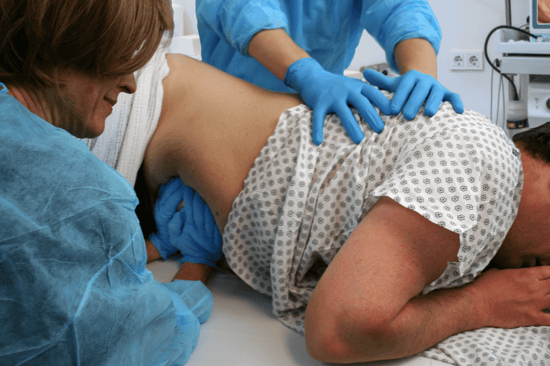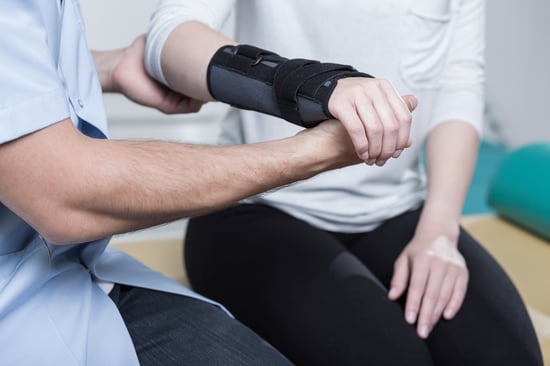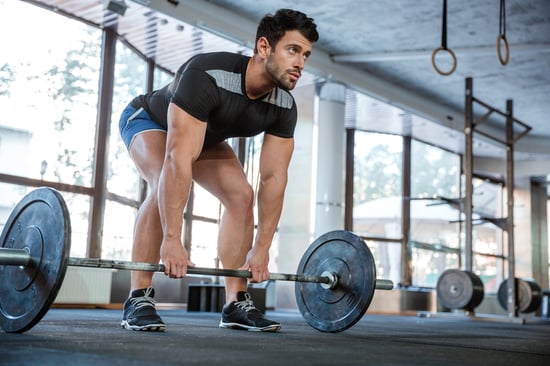Endoscopy Nursing: An Olympic Event
by Larissa Biggers, on August 23, 2019
A recent article in Endoscopy International raises the question, “Should the endoscopist be considered and trained like an athlete?” Although those outside the field of endoscopy might not immediately see the connection, because of the physical nature of a gastroenterologist’s job, the issue is an important one. And given the fact that one out of every two endoscopy staff will eventually suffer a work-related musculoskeletal (MSK) injury, the same question should be asked of nurses and nursing assistants.
No matter your position on the issue, the article, “Ergonomics in Endoscopy,” is well worth the read for its unique perspective. Key takeaways are described below.
Insufficient training
Like any high-level sport, endoscopy is a precise skill that requires education and practice to ensure competence. Professional athletes obviously must dedicate serious time and effort to their sport, with training that develops coordination, strength, stamina, and flexibility. Once basic skills are mastered, other elements like strategy and tactics are introduced. Throughout training, individuals are managed to minimize fatigue, strain, and injury.
In the field of endoscopy, new GIs are initially trained on the technical components of procedures like colonoscopies, with little emphasis placed on the physical requirements. For instance, to mitigate looping during colonoscopies, endoscopists might be taught to apply torque, retract the scope, and request abdominal pressure. Yet they might not be informed about something as simple as taking short breaks every hour to reduce the risk for injury.

Likewise, nurses and assistants receive very little (if any) formal instruction on maneuvers like the application of abdominal pressure or patient repositioning during colonoscopy, even though these tasks are commonly performed and are central to a successful procedure and good patient outcomes. Monitoring by instructors or mentors is rare.
Ergonomics: A neglected topic
Ergonomics training in sports is compulsory and includes an analysis of how athletes use their muscles and joints to deliver optimal performance. Athletes usually observe other professionals perform as a routine part of their training. These efforts are designed to prevent injury, allow for more efficient movement and load handling, and improve performance and stamina.
The Accreditation Council for Graduate Medical Education (ACGME) does not require gastroenterology fellows to undergo any formal training in preventing overuse injuries, so anything that endoscopists learn on this topic is dependent on their instructors, colleagues, and their own curiosity. Along the same lines, ergonomics and safe patient handling (SPH) techniques are not universally taught in nursing schools for a variety of reasons, including the prevalence of traditional instruction on “proper” patient handling technique, faculty unfamiliarity with ergonomics, and textbooks devoid of this information.
Treating MSK injuries
Injured athletes have access to rehabilitation programs to evaluate the nature of the injury, design a recovery plan, and help prevent recurrence. An endoscopist rarely has access to such services, and likely does not have the luxury to take time away from his or her practice to seek them out. In addition, given the fact that an endoscopist’s ability to perform procedures like colonoscopy is tied to his or her career and earning power, it is likely that many injuries go unreported. The same holds true for GI nurses and assistants.

What sport is endoscopy nursing?
The article compares endoscopy procedures to archery, as both require similar core alignment and positioning. Staying with the sports metaphor, GI nurses and assistants perform tasks similar to gymnasts and weightlifters. For instance, applying abdominal pressure, which requires bending at the waist and prolonged pushing is akin to a gymnast holding a handstand; repositioning a sedated patient also demands bending at the waist, plus lifting, which are comparable to a dead lift in weightlifting.

Consequences of poor ergonomics
When proper ergonomic principles are ignored, the result can be acute and / or chronic MSK pain and the inability to work or train. Although efforts to improve patient safety are well-publicized, the same cannot be said about safeguarding medical professionals who provide patient care.
Incorporating ergonomics training early in a medical professional’s career is a first step in reducing the incidence of the problem. In addition, facilities should employ multidisciplinary teams to prevent and manage MSKs. Finally, if injuries do occur, rest and rehabilitation must be the norm to promote recovery and guard against future occurrences.


